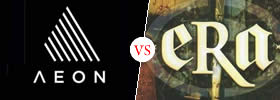Difference between Timber and Plywood
Key difference: Timber can be used to refer to any stage of the wood after the tree has been cut down. This may include the felled tree, the wood processed for construction, wood pulp for paper production, etc. Timber is also known as lumber. Plywood is a type of manufactured wood panel. It is made by gluing together plywood layers, also called veneers.
 Timber can be used to refer to any stage of the wood after the tree has been cut down. This may include the felled tree, the wood processed for construction, wood pulp for paper production, etc. Timber is also known as lumber. ‘Timber’ and ‘lumber’, for most purposes are synonyms. However, they are may be refereeing to slightly different things, when considering the contexts of the American English and British English.
Timber can be used to refer to any stage of the wood after the tree has been cut down. This may include the felled tree, the wood processed for construction, wood pulp for paper production, etc. Timber is also known as lumber. ‘Timber’ and ‘lumber’, for most purposes are synonyms. However, they are may be refereeing to slightly different things, when considering the contexts of the American English and British English.
Timber can be either rough or finished. The rough timber is the raw material, which can be processed and then used for a variety of functions. It will usually require additional cutting and shaping before it can be used. Whereas, finished timber is the wood that has already been processed and usually cut into various sizes. These pieces of finished timber can usually be bought and immediately be used in the project without requiring much or any cutting or shaping.
In the United Kingdom and other Commonwealth Countries such as Australia and New Zealand, the term ‘timber’ is used to refer to sawn wood products, such as floor boards. However, in the United States and Canada, ‘timber’ usually refers to felled trees, whereas the sawn wood products are referred to as ‘lumber.’ ‘Timber’ may also used to describe sawn lumber that is not less than 5 inches (127 mm). This is the smallest dimension that timber is available.
The phrase, “Timber!” has also been made famous in modern culture as being the word that is being screamed by bust axe-wielding lumberjacks as a felled tree falls to the ground during logging. It is quite similar to the use of “Fore!” in golf.
 Plywood, on the other hand, is a type of manufactured wood panel. It is made by gluing together plywood layers, also called veneers. These veneers are glued together with adjacent plies having their wood grain at right angles to each other. This allows them to form a composite material. Cross-graining, i.e. having the wood grain at right angles to each other, reduces the tendency of wood to split, as well as reduces expansion and shrinkage. It also makes the strength of the panel consistent across both directions.
Plywood, on the other hand, is a type of manufactured wood panel. It is made by gluing together plywood layers, also called veneers. These veneers are glued together with adjacent plies having their wood grain at right angles to each other. This allows them to form a composite material. Cross-graining, i.e. having the wood grain at right angles to each other, reduces the tendency of wood to split, as well as reduces expansion and shrinkage. It also makes the strength of the panel consistent across both directions.
Plywood has various advantages over traditionally wood. It is flexible, inexpensive, workable and re-usable. Furthermore, it can usually be manufactured locally. Plywood is also resistant to cracking, shrinkage, splitting, twisting and/or warping. It also has a high degree of strength. All these attribute combine to make plywood one of the most widely used wood products.
Plywood is further divided into:
- Softwood plywood - Is usually made either of cedar, Douglas fir or spruce, pine, fir or redwood and is typically used for construction and industrial purposes.
- Hardwood plywood – Made from hardwood, often from birch and used for demanding end uses. Birch plywood has excellent strength, stiffness and resistance.
- Tropical plywood - Made from mixed species of tropical wood.
- Special-purpose plywood
- Aircraft plywood
- Decorative plywood (overlaid plywood)
- Flexible plywood
- Marine plywood
- fire-retardant plywood
- moisture-resistant plywood
- sign-grade plywood
- pressure-treated plywood
Image Courtesy: danzer.com, unitedplywood.in









Add new comment